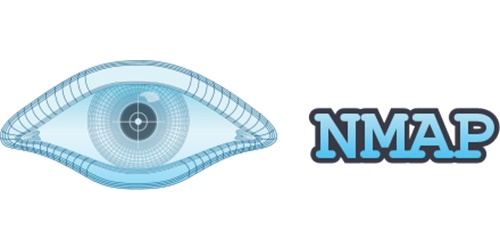How To Install Nmap on Fedora 41

Nmap, short for Network Mapper, is a powerful open-source tool used for network discovery and security auditing. It is widely utilized by network administrators and security professionals to assess the security of networks and systems. With its ability to scan large networks and identify active hosts, open ports, and services running on those hosts, Nmap is an essential tool in any IT toolkit. This article provides a comprehensive guide on how to install Nmap on Fedora 41, covering various installation methods, verification steps, and usage tips.
System Requirements
Before installing Nmap on Fedora 41, it’s important to ensure that your system meets the necessary requirements. Here are the hardware and software specifications:
- Operating System: Fedora 41 (ensure your system is updated)
- Memory: At least 1 GB of RAM (2 GB recommended for larger scans)
- Disk Space: Approximately 100 MB of free space for installation
- Network Connectivity: Required for downloading packages and updates
Additionally, ensure that your system has the necessary dependencies installed. These include basic development tools if you plan to compile from source.
Installation Methods
Nmap can be installed on Fedora 41 using several methods. Each method has its own advantages and disadvantages:
- Using DNF: The default package manager in Fedora, DNF is the easiest way to install software.
- Installing via Snap: Snap packages are containerized software packages that work across various Linux distributions.
- Compiling from Source: This method allows for customization but requires more technical knowledge.
Installing Nmap via DNF
The most straightforward way to install Nmap on Fedora 41 is through the DNF package manager. Follow these steps:
- Open a Terminal: You can find the terminal application in your applications menu or by searching for “Terminal.”
- Update Your System: Before installing any new software, it’s a good practice to update your system. Run the following command:
sudo dnf update - Install Nmap: Now you can install Nmap by executing:
sudo dnf install nmapThis command will download and install Nmap along with any required dependencies.
- Confirm Installation: After installation, you can verify that Nmap has been installed successfully by checking its version:
nmap --version
If you encounter any issues during installation, check for error messages in the terminal. Common issues may include missing dependencies or network connectivity problems.
Installing Nmap via Snap
If you prefer using Snap packages, you can install Nmap this way as well. Here’s how to do it:
- Install Snapd: If Snap is not already installed on your system, you can do so with:
sudo dnf install snapd - Enable Snap Support: After installing Snapd, enable the systemd unit that manages the main snap communication socket:
sudo systemctl enable --now snapd.socket - Create a Symbolic Link: To ensure that classic snap support works properly, create a symbolic link:
sudoln -s /var/lib/snapd/snap /snap - Install Nmap via Snap: Now you can install Nmap using Snap with:
sudo snap install nmap - Verify Installation: Similar to the DNF method, check if Nmap was installed correctly:
nmap --version
This method allows you to keep Nmap updated automatically as Snap manages updates for you.
Installing Nmap from Source
If you want to customize your installation or use a specific version of Nmap, compiling from source is an option. Follow these detailed steps:
- Install Development Tools: First, ensure that you have all necessary development tools installed:
sudo dnf groupinstall "Development Tools" - Add Additional Dependencies: You may also need some additional libraries:
sudo dnf install openssl-devel libpcap-devel - Download the Latest Version of Nmap: Visit the official Nmap website or use wget to download it directly:
wgethttps://nmap.org/dist/nmap-7.95.tar.bz2 - Extract the Downloaded File:
bunzip2 nmap-7.95.tar.bz2 tar -xvf nmap-7.95.tar - Navigating into the Directory:
cd nmap-/ - Compile and Install Nmap:
Run these commands sequentially:/configure make sudo make install - Troubleshooting Compilation Issues:
If you encounter errors during compilation, review them carefully. Common issues often relate to missing libraries or permissions. Ensure all dependencies are installed correctly before retrying. - Verify Installation:
After installation completes, confirm it by checking the version:nmap --version
Verifying the Installation
nmap --versionThis command should return information about the installed version of Nmap along with copyright details. If you receive an error stating that ‘nmap’ is not found, revisit the installation steps or check your PATH settings.
Using Nmap
Nmap offers a wide range of functionalities for network scanning and security auditing. Here are some basic commands and options to get started:
- Pinging a Host:
To check if a host is online:
nmap -sn [target IP]- Sweeping a Range of IPs:
To scan multiple IP addresses within a subnet:nmap -sn 192.168.1.0/24 - Sweeping Specific Ports:
To scan specific ports on a host:nmap -p 22,80 [target IP] - Diving Deeper with OS Detection:
For advanced scanning options like OS detection:nmap -O [target IP] - Scripting Engine Usage:
Utilize scripts for more complex tasks:nmap --script [script name] [target IP]
Nmap provides extensive documentation and help options directly in the command line. Use `man nmap` or `nmap --help` to explore more features and options available.
Uninstalling Nmap
If you need to uninstall Nmap for any reason—whether switching versions or troubleshooting—here’s how to do it based on your installation method.
- If installed via DNF:
sudo dnf remove nmap - If installed via Snap:
sudon snap remove nmap - If compiled from source:
You may need to manually delete files unless an uninstall script was provided during installation.
Congratulations! You have successfully installed Nmap. Thanks for using this tutorial for installing Nmap on Fedora 41 system. For additional or useful information, we recommend you check the official Nmap website.